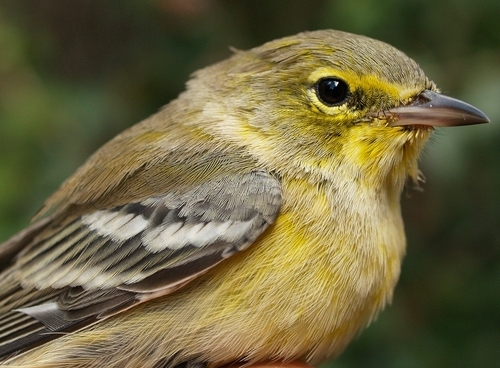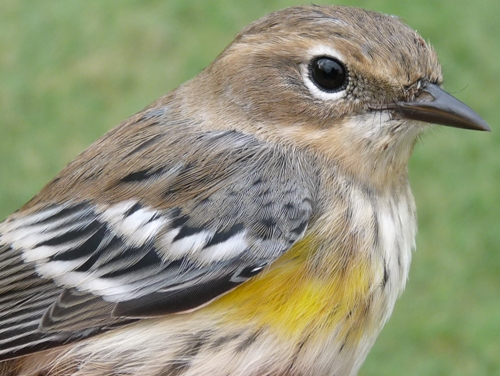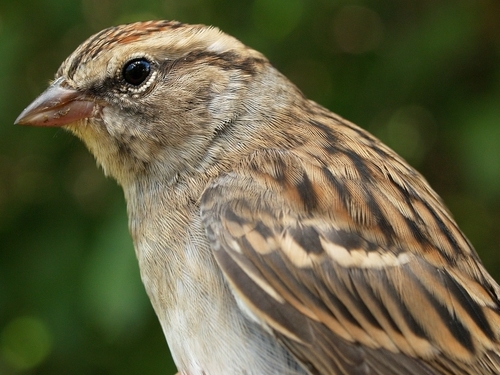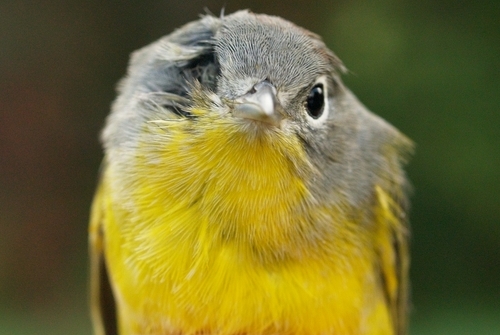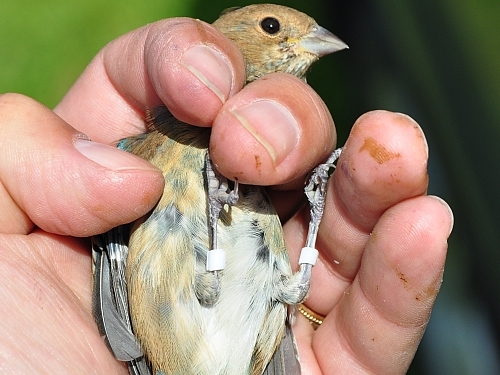|
McGILL BIRD OBSERVATORY |
|||||||||||||||||||||||||||||||||||||||||||||||||||||||||||||||||||||||
Welcome
to the McGill Bird Observatory weekly report.
Click here for a complete listing of our archives.
Bander-in-charge: Simon Duval, Lance Laviolette Notes: Wow. No, on second thought, that should be WOW! Throughout this fall we've been lucky to have record-setting numbers to report nearly every week, and based on the results to date, we expected that we still had even bigger weekly totals to come as we approach the traditional peak of migration in late September and early October. Even so, this week took us by surprise. Here are a few comparisons to put this week's banding numbers into perspective. The 881 Yellow-rumped Warblers is more than we've ever banded of any species in a single week - and also more than double the number of individuals of any species (other than Yellow-rumped Warbler) banded in an entire season! Another way of looking at it is that we banded more Yellow-rumped Warblers this week than we did birds of all kinds throughout the first four weeks of this fall! Finally, consider that previous to this week, we had never banded more than 240 birds in a day, but we exceeded that mark twice, with 245 on Thursday Sep 23, and then 315 on Saturday. On that record-setting day, our total of Yellow-rumped Warblers alone (255) exceeded the previous record for all species combined! The remaining 398 birds of 39 species banded this week can't be forgotten either, as they alone would also have made this an above average week 8. Congratulations to Simon for doing an excellent job managing the relentless onslaught of birds (aside from a rain-shortened effort on Friday that yielded 74 birds, even the slowest of the other days had 129 banded!), and big thanks to all of the volunteers who provided tremendous help as extractors, scribes, net assistants, and observers this week, including those "on-call" who came in to provide extra assistance on the busiest days! Periods like this truly emphasize how much of a team effort this kind of research really is. Continuing with the impressive statistics for the week, we banded birds at a pace of over 300 individuals per 100 net hours for the first time ever during migration (we've occasionally achieved this rate with limited effort in winter). That caused our average rate of capture for the fall to jump by over 50%, from 49.1 to 75.5 per 100 net hours, and even after six years of banding, was enough to make our all-time rate jump by more than 2 birds per 100 ner hours. With five full weeks of fall migration remaining, we have already exceeded the total number of birds banded in fall 2007, and are in easy striking distance of three of the other four previous fall seasons. The number of species observed this week, 75, is the lowest ever for week 8, as is the cumulative total of 121 for the fall season at this point, but the priority this week was keeping up with the busy pace of extraction and banding, so that's quite understandable. While the diversity of species banded this week (40) was above average, we had a record low count of species caught as repeats (only 10).
With observations a bit limited this week due to the rush of birds in our nets, we added only two species to our fall 2010 checklist: Herring Gull and Field Sparrow, the latter also counting as first of the year. We also saw our first Yellow Palm Warbler of the fall this week. As noted in the caption for the picture of the week, we banded our first ever Pine Warbler - long overdue, given that some breed only a few hundred metres away in the Morgan Arboretum. We also banded our first Orange-crowned Warbler and Slate-colored Juncos of the fall. Among the repeats, Philadelphia Vireo was of note, as we've never before had any recaptures of this species.
It isn't often that the same species tops both the lists of species banded and individuals observed, but this week Yellow-rumped Warbler does with a wide margein over all others in both categories. Among species banded, Yellow-rumped Warbler has now been the top species for week 8 in all even years (2006, 2008, 2010), while White-throated Sparrow has taken top place in all odd years (2005, 2007, 2009) but was relegated to second spot this year with barely over 10% as many individuals as Yellow-rumped Warblers. Relative to the Yellow-rumps, the count of 53 Nashville Warblers seems quite modest, but in fact it is by far the most we've ever banded of them in one week, the previous high count being 38 in week 7 of 2005. Similarly, the Blue Jay count is noteworthy as it doubles the previous record high of 9 banded in a single week, back in week 7 of 2008. Meanwhile the 20 Tennessee Warblers matches the weekly record set in week 7 of 2006, but brings the season total to 105, which far exceeds any previous fall. After four straight weeks of being the dominant species banded, Magnolia Warbler dropped to a tie for 7th place, with the season total of 247 getting rather close to the record count of 264 set in 2008. The 16 juncos banded this week is yet another indication that migration is on the early side this fall, as we have never before banded more than 3 juncos in a week this yearly in the season, and typically don't see them abundant enough to crack the top ten until the second week of October. The average daily count of 239 Yellow-rumped Warblers this week eclipses the 178 estimated during the peak week of the big 2008 flight. Canada Goose and American Crow remained near the top, as is typical for this time of year. Aside from the Yellow-rumps, the most impressive result among the observations was Blue Jay, with the mean daily count of 77 individuals more than double what we've ever had previously in any week. The count of nearly 51 White-throated Sparrows per day is above average for week 8 but close to the average for week 9, again potentially suggesting advanced migration. Red-winged Blackbird jumped back into the list thanks to a few large flocks passing through. Most other species have shuffled around the list a bit; of note, Black-capped Chickadee dropped three positions this week although mean daily counts remained almost identical (25.6 last week compared to 25.7 this week), while American Robin maintained its position although the count rose by 50%. With the end of September approaching, we expect our busy season to continue for another week or two, but the composition of birds on site to shift noticeably toward sparrows and kinglets and away from warblers. We have enjoyed a fabulous season with warblers so far, with over 40 individuals banded of 16 different species, and half of those having already set record high counts for a fall season. Now we eagerly await the patterns to emerge for the later migrants - will they be similarly abundant this year? We have five more weeks of fall migration monitoring to answer that question.
|

